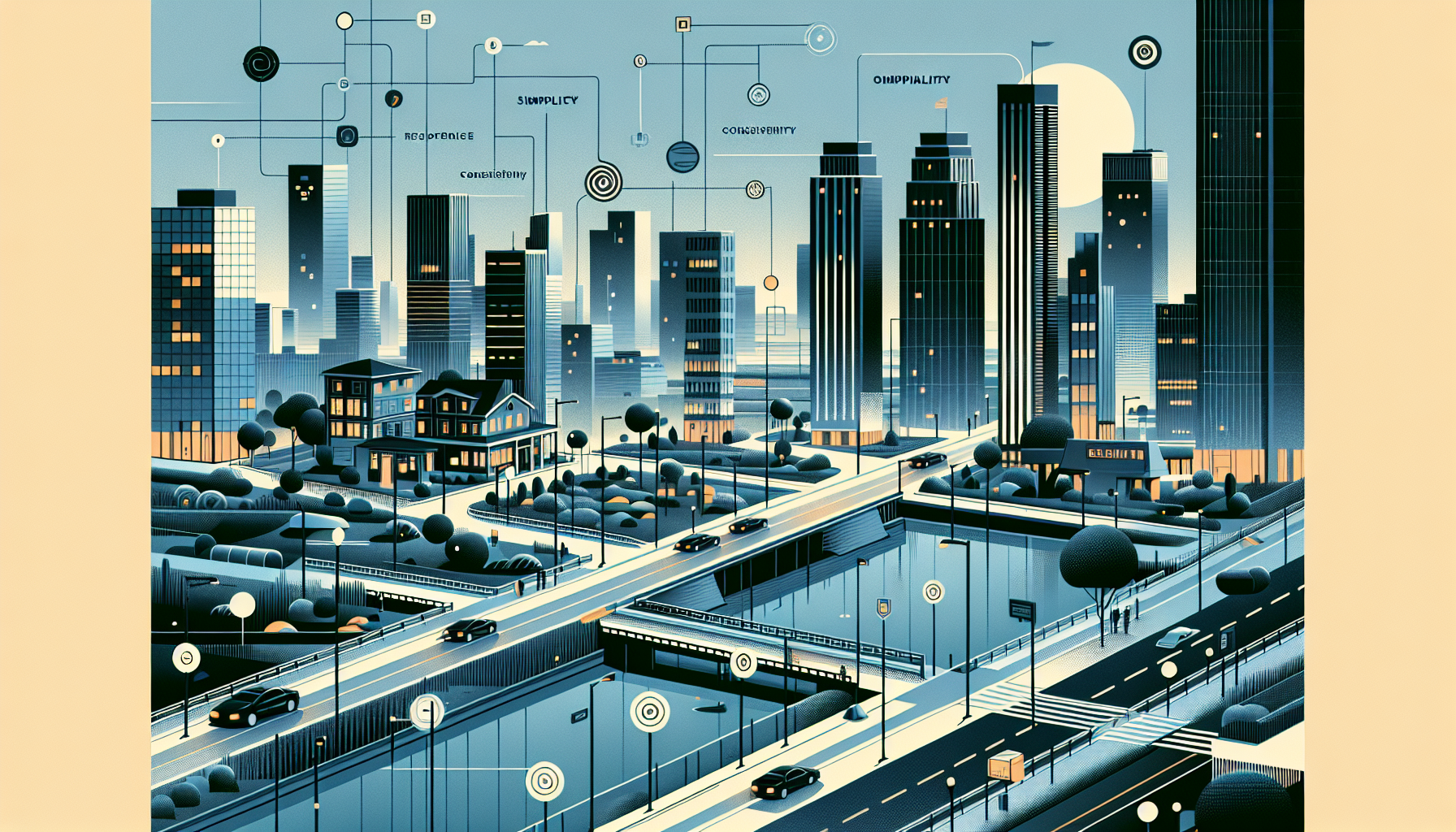“Building a User-Friendly Digital City: Mastering UI/UX Design”
Creating a successful digital presence is akin to building a vibrant city where every street and structure is strategically placed to enhance interaction and delight users. In this digital city, UI (User Interface) and UX (User Experience) form the backbone, guiding users seamlessly through their journey. However, this intricate tapestry can be disrupted by common UI/UX design mistakes, turning potential excellence into frustration. Let’s explore how to steer clear of these design disasters and ensure your software is as inviting as it is functional.
Imagine your software as a bustling city, filled with diverse users each bringing their unique expectations and needs. Overcomplicated UI designs are comparable to confusing detours or traffic jams that lead users astray, testing their patience. While the temptation to incorporate every trendy feature might be strong, this can lead to a cluttered and overwhelming interface. Instead, prioritize simplicity. Think of a city with clear paths and signs that encourage exploration without the need for a guidebook. Focus on creating intuitive navigation that helps users reach their destinations efficiently and enjoyably.
In today’s digital age, mobile responsiveness is an essential component of any design strategy. With the increasing dominance of mobile devices as the primary access point to the internet, a lack of mobile-friendly design is like erecting barriers around your city. Users demand a seamless experience across devices, and failing to provide this continuity risks excluding a large segment of your audience.
Consistency is critical, acting as the street signs and traffic signals of your digital city. Just as uniform signage helps real-world city dwellers navigate their environment with ease, a consistent design language across your platform creates a sense of familiarity and trust among users. Ensuring that your fonts, colors, and buttons are harmonized across pages allows users to focus on the content and tasks at hand, reducing confusion and enhancing their experience.
Think of navigational intuition as the city planning that ensures newcomers can find their way effortlessly. This entails logical menu structures, clear labeling, and a well-designed visual hierarchy that guides users’ attention to the most important elements. Your users should always feel oriented, knowing how to find what they need without undue frustration.
User feedback is invaluable, transforming your digital blueprint into a thriving, dynamic community. By actively engaging with users and incorporating their suggestions, you ensure that your design meets real-world needs. Testing and feedback not only validate your design choices but also foster a sense of user involvement and loyalty.
Accessibility acts as a bridge to all parts of your digital city, ensuring all users can engage meaningfully with your content. Consider the diverse abilities of your users and make design choices that include features like color contrasts for visually impaired users and keyboard navigation for those with mobility challenges. By prioritizing accessibility, you’re not just meeting compliance standards; you’re also expanding your audience and enhancing user engagement.
In the fast-paced world of digital interaction, speed is paramount. Users expect quick responses, and slow applications are akin to rush-hour traffic. To keep your city bustling with activity, optimize your software to reduce wait times, ensuring a fast, smooth user experience that satisfies and retains visitors.
Handling errors with empathy is crucial in maintaining user trust. Clear, friendly error messages can turn potential frustrations into learning opportunities, smoothing out the user journey and fostering a positive relationship with your software.
Creativity and innovation breathe life into your digital city, but they should be balanced with familiar paths that users know and trust. Innovation should enhance the digital experience without obscuring the established routes that users rely on for comfort and ease of navigation.
For business leaders and designers, the goal is not merely to build software but to create an engaging environment where users are eager to explore and return. Embrace UI/UX design as an opportunity to craft experiences that resonate deeply with users, driving satisfaction, and fostering loyalty.
For more insights and practical advice on effective software building and UI/UX mastery, check out “Software Simplified: Navigating the Development Maze.” This resource, available on Amazon, offers a wealth of knowledge to help you design thriving digital environments.
May your digital city thrive, with every interaction marking a step forward in a rewarding journey for your users.






